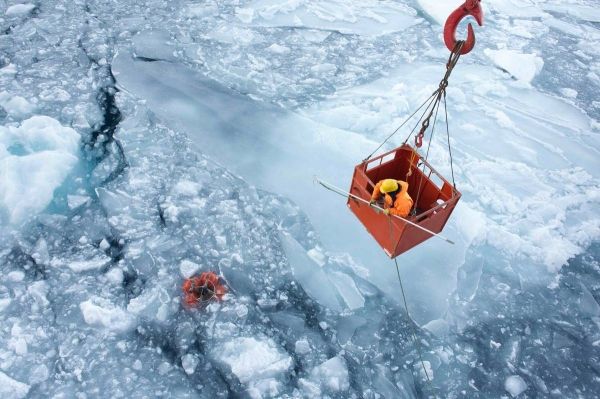The Greenland Ice Sheet is melting faster today than it did only a few years ago. The reason: it’s not just melting on the surface – but underwater, too. AWI researchers have now found an explanation for the intensive melting on the glacier’s underside, and published their findings in the journal Nature Geoscience.
The glaciers are melting rapidly: Greenland’s ice is now melting seven times faster than in the 1990s – an alarming discovery, since climate change will likely intensify this melting in the future, causing the sea level to rise more rapidly. Accordingly, researchers are now working to better understand the underlying mechanisms of this melting. Ice melts on the surface because it is exposed to the sun and rising temperatures. But it has now also begun melting from below – including in northeast Greenland, which is home to several ‘glacier tongues’. Each tongue is a strip of ice that has slid down into the ocean and floats on the water – without breaking off from the land ice. The longest ice tongue, part of the ‘79° North Glacier’, is an enormous 80 km long. Over the past 20 years, it has experienced a dramatic loss of mass and thickness, because it’s been melting not just on the surface, but also and especially from below.
Too much heat from the ocean
A team led by oceanographer Janin Schaffer from the Alfred Wegener Institute, Helmholtz Centre for Polar and Marine Research (AWI) in Bremerhaven has now identified the source of this intense underwater melting. The conclusions of their study, which the experts have just released in the journal Nature Geoscience, are particularly unsettling because the melting phenomenon they discovered isn’t unique to the 79° North Glacier, which means it could produce similar effects elsewhere.
Read more at Alfred Wegener Institute, Helmholtz Centre for Polar and Marine Research
Image: Collecting measuring instruments is a particular challenge in ice-covered regions. Here the "Mummy Chair" is used to fasten a rope with an anchor hook at the anchoring which is to be collected. If this is successful, the anchoring is gently pulled out of the water on deck of the POLARSTERN by a crane. (Photo: Richard Jones, Alfred-Wegener-Institut)


